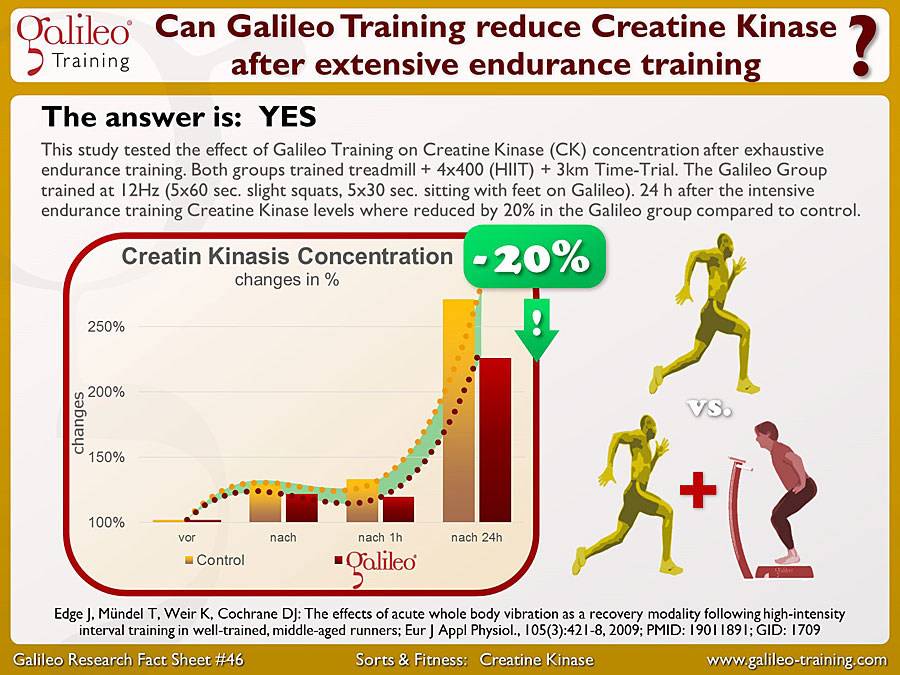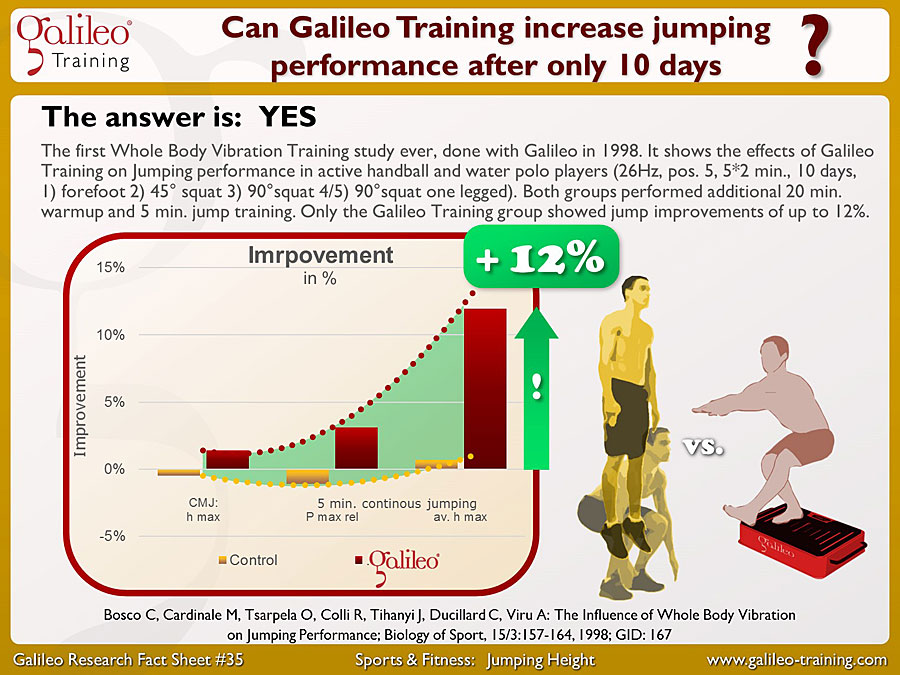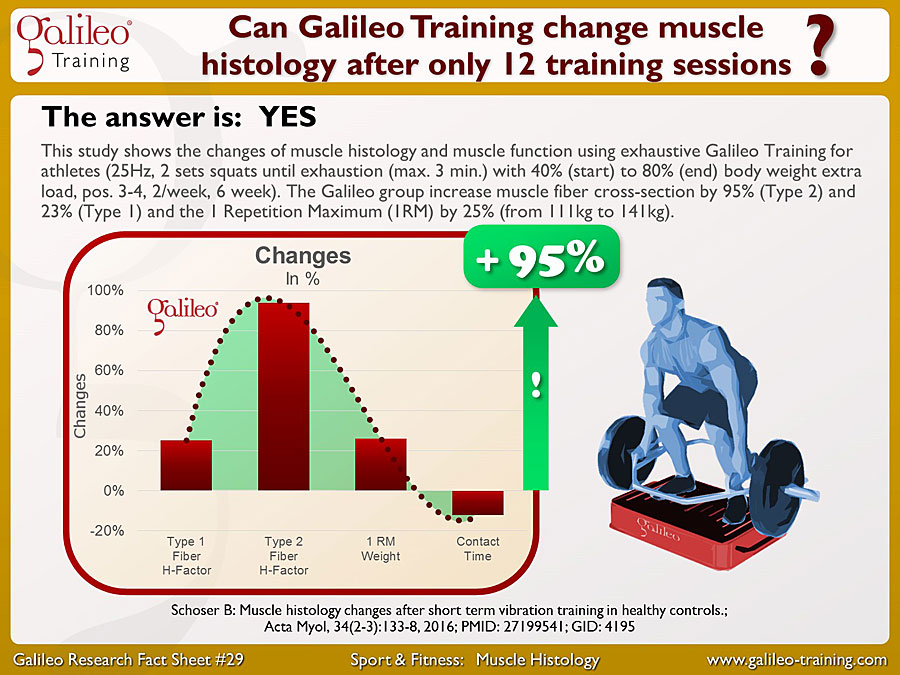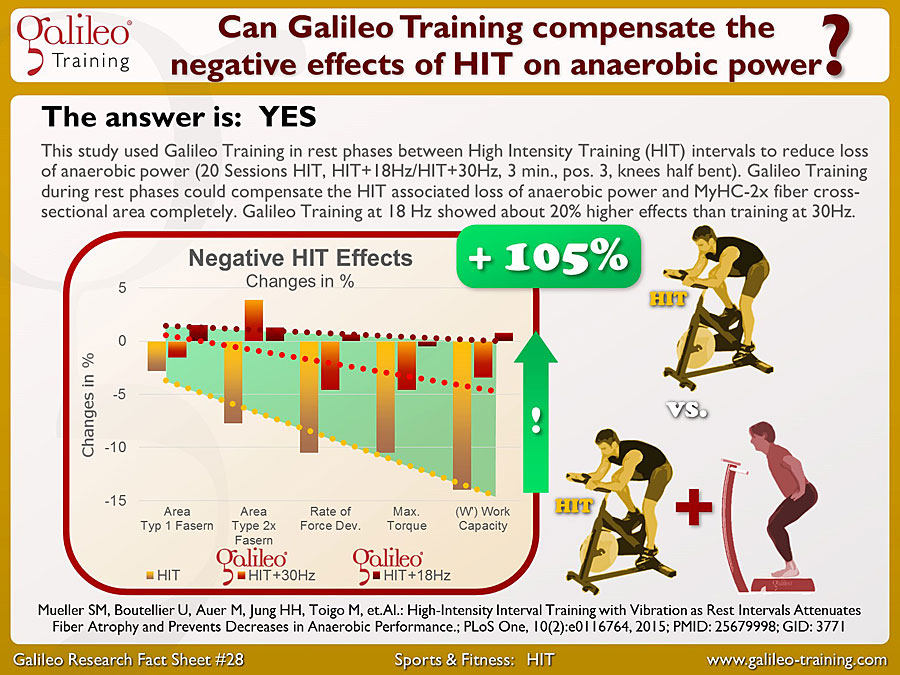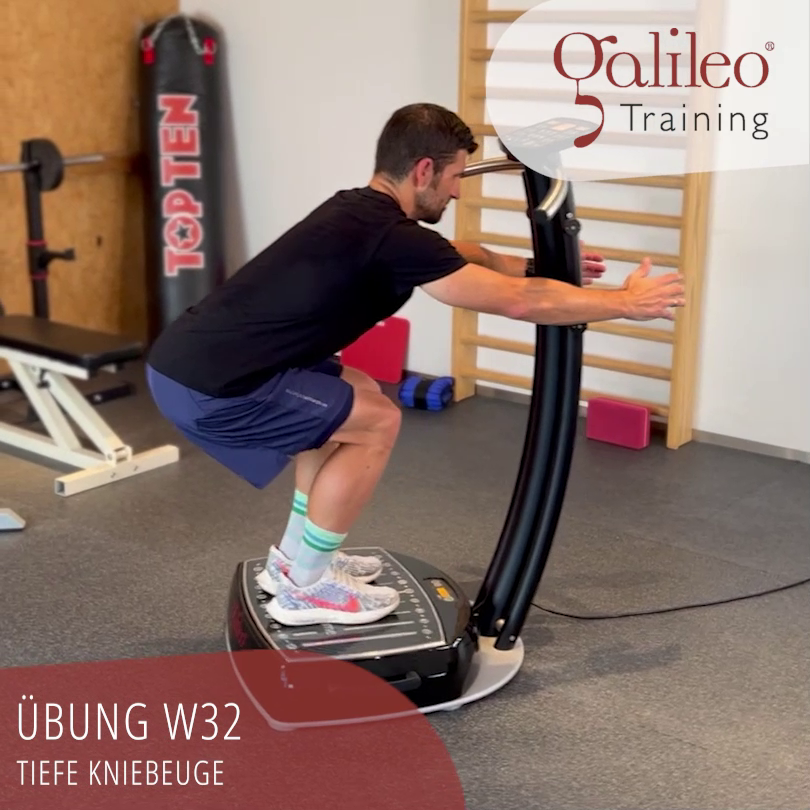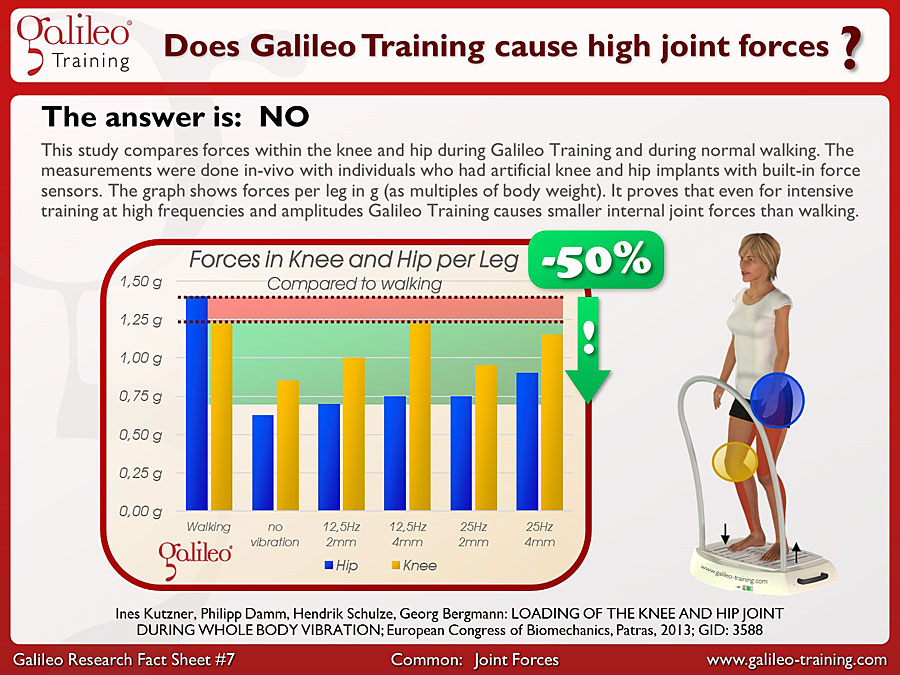Tag Archives: GalileoWorkout
This study tested the effect of Galileo Training on Creatine Kinase (CK) concentration after exhaustive endurance training. Both groups trained treadmill + 4x400 (HIIT) + 3km Time-Trial. The Galileo Group trained at 12Hz (5x60 sec. slight squats, 5x30 sec. sitting with feet on Galileo). 24 h after the intensive endurance training Creatine Kinase levels where reduced by 20% in the Galileo group compared to control...
Galileo Research Facts No. 35: Can Galileo Training increase jumping performance after only 10 days?
The first Whole Body Vibration Training study ever, done with Galileo in 1998. It shows the effects of Galileo Training on Jumping performance in active handball and water polo players (26Hz, pos. 5, 5*2 min., 10 days, 1) forefoot 2) 45° squat 3) 90°squat 4/5) 90°squat one legged). Both groups performed additional 20 min. warmup and 5 min. jump training. Only the Galileo Training group showed jump improvements of up to 12%...
Galileo Research Facts No. 29: Can Galileo Training change muscle histology after only 12 training sessions?
This study shows the changes of muscle histology and muscle function using exhaustive Galileo Training for athletes (25Hz, 2 sets squats until exhaustion (max. 3 min.) with 40% (start) to 80% (end) body weight extra load, pos. 3-4, 2/week, 6 week). The Galileo group increase muscle fiber cross-section by 95% (Type 2) and 23% (Type 1) and the 1 Repetition Maximum (1RM) by 25% (from 111kg to 141kg)...
Galileo Research Facts No. 28: Can Galileo Training compensate the negative effects of HIT on anaerobic power?
This study used Galileo Training in rest phases between High Intensity Training (HIT) intervals to reduce loss of anaerobic power (20 Sessions HIT, HIT+18Hz/HIT+30Hz, 3 min., pos. 3, knees half bent). Galileo Training during rest phases could compensate the HIT associated loss of anaerobic power and MyHC-2x fiber cross-sectional area completely. Galileo Training at 18 Hz showed about 20% higher effects than training at 30Hz...
Galileo Research Facts No. 23: Is oxygen uptake during Galileo Training independent from frequency and amplitude?
This study reports the influence of frequency and amplitude during Galileo Training on the oxygen uptake (1 min., 18-34Hz, position 1.5 to 3.5, active standing at 170°). The results show that with increasing frequency and amplitude oxygen consumption during Galileo Training can be increased up to 170%. The effect of higher increasing frequencies dominated the effect of increasing amplitude...
Galileo Research Facts No. 22: Does oxygen uptake during Galileo Training increase with frequency and extra loading?
This study tested the influence of frequency and extra loading during Galileo Training on the oxygen uptake (1 min., 18Hz and 34Hz, position 2.5, active standing at 170°, extra loading 40% of lean body mass). The results show that with increasing frequency and increasing extra loading Galileo Training can increase oxygen uptake by up to 260%.
Galileo Research Facts No. 21: Does blood-flow during Galileo Training increase with frequency and Amplitude?
This study reports the influence of frequency and amplitude during Galileo Training on the blood-flow (1 min., 5-30Hz, position 2.5 and 4.5, static squatting). The results show that with increasing frequency and increasing amplitude blood-flow velocity during Galileo Training can be increased by 220% to 420%.
Galileo Research Facts No. 20: Can Galileo Training increase blood flow?
This study reports the immediate effect of Galileo Training on blood flow (26Hz, Pos. 2, 3 minutes, slow squatting, additional weights +35% to +40% of body mass). Control group: Cycling ergometer, 3 min., 50W. In the Galileo Training group blood flow at the foot and calf increase between 120% and 150%. At the same time the cardiovascular reaction is significantly smaller than in cycling ergometer training. ..
Übung W32: Tiefe Kniebeuge
Ziel: Leistungssteigerung + Kräftigung Beinmuskulatur, Gluteus und Rückenmuskulatur
Galileo Research Fact Sheet No. 6: Are joint forces during Galileo Training higher than during vertical vibration?
This study compares muscle activation of the legs (EMG) of Galileo Training compared to vertical vibration (30Hz and 2mm amplitude). Compared to vertical vibration Galileo Training results in up to 150% higher additional activation of the muscle using identical amplitude and frequency (100% equivalent to standing)...
